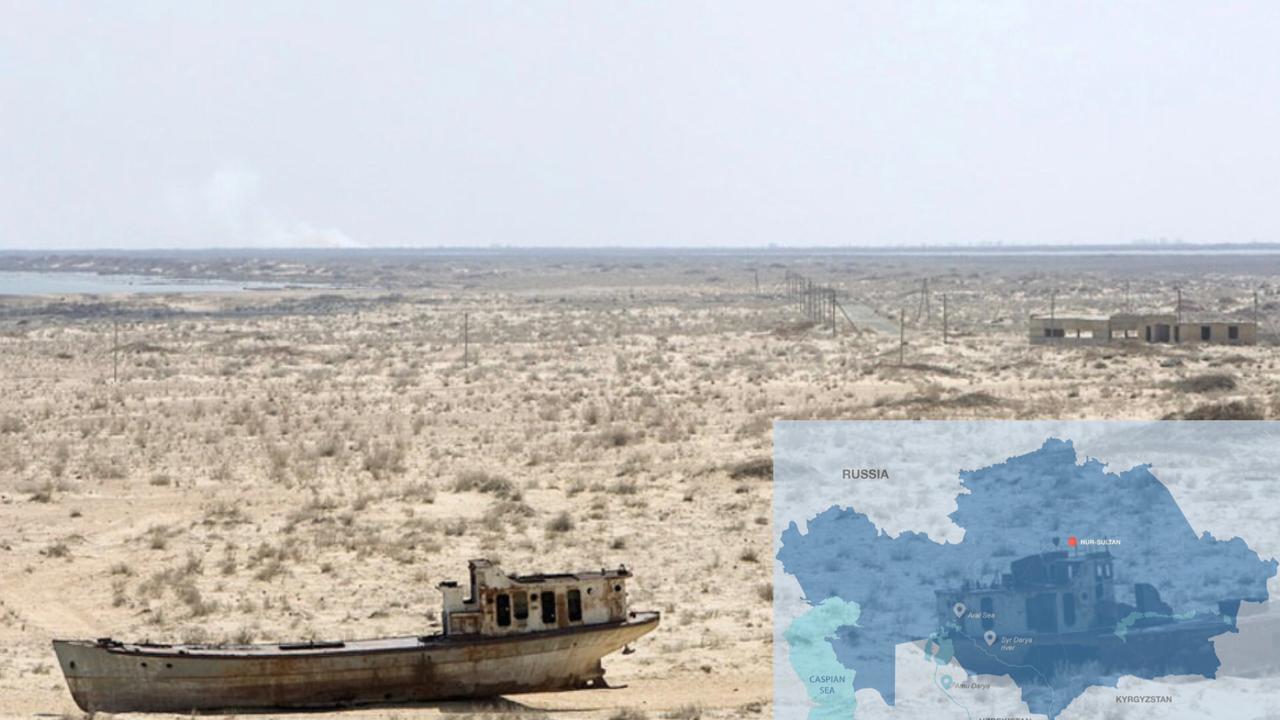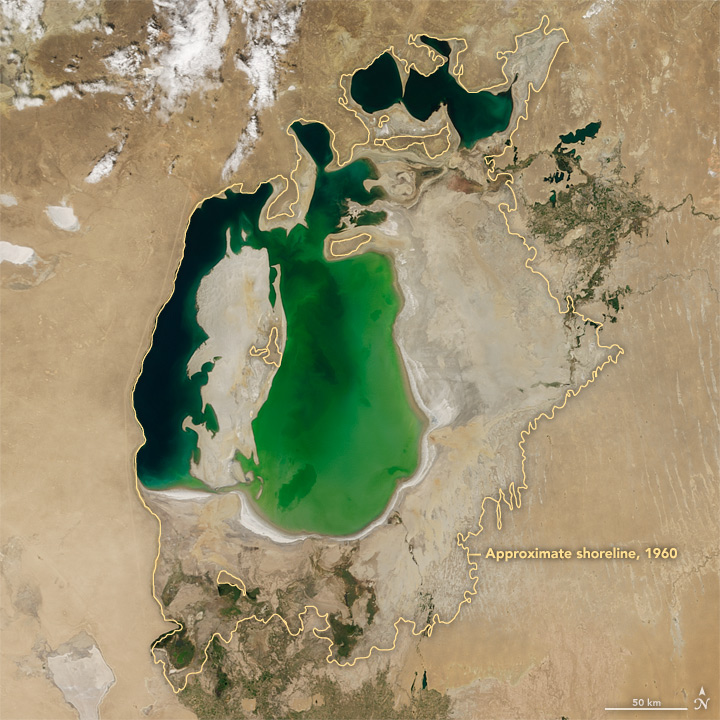NUR-SULTAN – The United Nations General Assembly adopted a May 19 resolution on the Aral Sea region declaring it a zone of ecological innovations and technologies and committing to promote greater research and scientific efforts to recover the region and improve its environment, reports the UN press service.

Two abandoned ships in the former Aral Sea. Photo credit: United Nations/Eskinder Debebe. Click to see the map in full size.
The resolution was initiated by Uzbek President Shavkat Mirziyoyev at the 76th session of the UN General Assembly in September 2017, when he described it as the “epicenter of an ecological disaster.” The resolution was co-authored by 50 states, including Kazakhstan, Azerbaijan, Russia, Tajikistan, and Turkmenistan.
“It (the resolution) called on the Member States, the United Nations, and international financial institutions to develop and implement environmentally sound technologies,” said the UN in a press statement.
In the resolution, the General Assembly expressed support for regional activities and initiatives aimed at improving the environmental, social, economic, and demographic situation in the Aral Sea region.
While Uzbekistan hopes to mitigate the crisis with this resolution in place, a representative of Kyrgyzstan expressed concerns over the efficiency of funds directed towards the effort.
The Aral Sea was once the world’s fourth-largest lake. Central Asia’s two biggest rivers – the Amu Darya and the Syr Darya – feed the Aral Sea, yet the large Soviet campaign launched in the 1970s diverted most of their waters to supply the region’s growing cotton production. The action caused the sea to dry to a tenth of its original area of 68,000 square kilometers.

Initial size of the Aral Sea depicted by NASA as of Aug. 25, 2000. Photo credit: NASA

Images of the Aral Sea from space as of Aug. 22, 2017, where the size is dramatically reduced. Photo credit NASA.
Salinity levels also increased significantly damaging rich delta ecosystems and killing local fish thereby affecting local communities that relied on fishing as their main source of income.
Sandy salt deserts of more than 5.5 million hectares have emerged on the dried part of the Aral Sea causing dust and salt storms that carry tons of dust and poisonous minerals into the atmosphere.
Shared by Kazakhstan and Uzbekistan, the Aral Sea issue pertains to the entire Central Asian region of 62 million people causing multiple environmental, socioeconomic, health, and humanitarian challenges for the region and its communities.
Since 2005, the 13-kilometer long Kok-Aral Dam, an $85 million project initiated by Kazakhstan and mostly funded by the World Bank, managed to prevent water from going into the sands, giving some hope for the sea’s revival.


